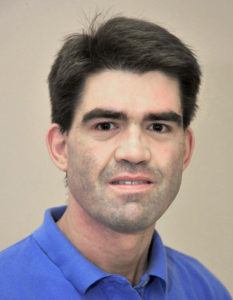Dr. Dirk Hoffmeister is a pharmaceutical microbiologist based at Hans Knöll Institute (HKI) in Jena, Germany. He also directs the affiliated Research Group Pharmaceutical Microbiology, a collaboration between HKI and Friedrich Schiller University (FSU). The Research Group studies biosynthetic pathways in microbes and fungi.
Dr. Hoffmeister received his undergraduate diploma in biology from Eberhard Karls University and went on to earn his PhD at Albert Ludwigs University in 2002. He conducted his postdoctoral research at the University of Wisconsin, Madison. Over the next several years, Dr. Hoffmeister taught and conducted research at Albert Ludwigs University’s Institute for Pharmacy and then at the University of Minnesota-Saint Paul, until he began his professorship at HKI and FSU.
He has co-authored nearly 100 journal articles and book chapters, including many recent publications on the microbiology of psilocybin-containing mushrooms.
In September 2017, Dr. Hoffmeister was part of the research team that discovered norpsilocin, a natural compound in the magic mushroom Psilocybe cubensis, using 1D and 2D NMR spectroscopy.1 The team was able to visualize Psilocybe mushrooms’ authentic metabolic profile through a new extraction method they developed that avoided dephosphorylation. They hypothesize that norpsilocin is derived from baeocystin (a known product of Psilocybe mushrooms) upon its dephosphorylation in the body. They also believe that norpsilocin is likely psychotropic, but this has yet to be confirmed. This important discovery was covered by Psychedelic Science Review.
As reported in November 2019, Dr. Hoffmeister contributed to the first-ever identification of naturally occurring beta-carbolines in Psilocybe mushrooms species in a study led by Dr. Felix Blei.2 A Psychedelic Science Review article explains how the discovery advances our understanding of the psychoactive experience and the therapeutic potential of psilocybin.
In January 2020, Dr. Hoffmeister was part of a research team led by Dr. Claudius Lenz that used advanced spectroscopy to help identify two enzymes and three compounds (and their structures) involved in the characteristic bluing of psilocybin-containing mushrooms.3 Psychedelic Science Review reported on the findings in a subsequent article. In July 2021, the researchers revised their theory on the origin of the mushrooms’ blue color based on new spectroscopy data.4
In December 2020, CaaMTech (a psychedelic pharmaceutical R&D company founded and led by Dr. Andrew Chadeayne) announced a collaboration with HKI aimed at elucidating the chemical composition of Psilocybe mushrooms. Under Dr. Hoffmeister’s direction, the research team will compare the chemical structures and processes of different Psilocybe mushroom strains, among other work. In a press release, Dr. Hoffmeister stated,
Metabolic profiling of these fungi is an exciting endeavor. A more global view on their metabolic diversity has surprisingly not been undertaken yet, but is needed to help us understand their effects more profoundly. From an academic perspective, it may also tell us why nature has evolved these compounds.
Dr. Hoffmeister’s research into enzymatic properties and biosynthetic pathways in Psilocybe mushrooms has also helped elucidate processes for the biotechnological production of psilocybin.5,6 More information on Dr. Hoffmeister’s research can be found on ResearchGate.
